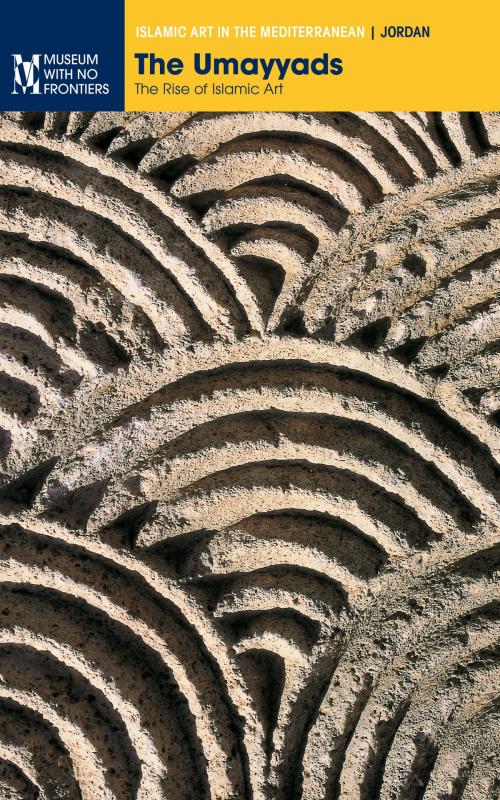| Author: | Ghazi Bisheh, Fawzi Zayadine, Mohammad al-Asad, Ina Kehrber, Tohme Lara | ISBN: | 9783902782076 |
| Publisher: | Museum With No Frontiers, MWNF (Museum Ohne Grenzen) | Publication: | December 15, 2009 |
| Imprint: | Language: | English |
| Author: | Ghazi Bisheh, Fawzi Zayadine, Mohammad al-Asad, Ina Kehrber, Tohme Lara |
| ISBN: | 9783902782076 |
| Publisher: | Museum With No Frontiers, MWNF (Museum Ohne Grenzen) |
| Publication: | December 15, 2009 |
| Imprint: | |
| Language: | English |
Far from abolishing the freedom of local cults and undermining existing town plans, the Umayyads acknowledged the aesthetic language already in place on their arrival in Jordan (661), and re-invented its forms with an astonishing freedom of expression. Brief as their hegemony was (less than 90 years) the role of the Umayyad caliphs remains crucial in the history of Islam. By establishing the first crossroads between the two blocs of the Muslim world (IranMesopotamia and the Mediterranean), they brought the richness of the two civilisations to a re-united Middle East. The Umayyads were passionate architects and most of the art forms in which they have excelled (mosaic, stucco, frescoes and figurative sculpture) are, therefore, linked to architecture. Although they borrowed a number of motifs from the inexhaustible Antique repertoire, the architecture, as much as the decorative arts, clearly prefigure the artistic expressions of a later Islam. Jordan, small though it is, is a huge open-air museum, and it is to the Umayyads that one owes the apparition of the minaret, mihrab and maqsura; the full development of geometrical motifsand epigraphic borders. The pivotal role of the Umayyads in world culture is witnessed in the civic architecture of the period, which generated a multitude of splendidly decorated palaces such as, for example, the largest Umayyad Palace of Jordan, ‘Qasr al-Mouchatta’ or Qousayr Amra, where the famous frescoes of the Six Kings exhibit clearly their Hellenistic influence. Masterpieces such as caravanserais, country residences, hammams and great works of art, equally attest to Umayyad supremacy in the innovative use of existing styles. Museum With No Frontiers eloquently succeeds in bringing to light the cardinal synthesis which has presided over the birth of this unique artistic language.
Far from abolishing the freedom of local cults and undermining existing town plans, the Umayyads acknowledged the aesthetic language already in place on their arrival in Jordan (661), and re-invented its forms with an astonishing freedom of expression. Brief as their hegemony was (less than 90 years) the role of the Umayyad caliphs remains crucial in the history of Islam. By establishing the first crossroads between the two blocs of the Muslim world (IranMesopotamia and the Mediterranean), they brought the richness of the two civilisations to a re-united Middle East. The Umayyads were passionate architects and most of the art forms in which they have excelled (mosaic, stucco, frescoes and figurative sculpture) are, therefore, linked to architecture. Although they borrowed a number of motifs from the inexhaustible Antique repertoire, the architecture, as much as the decorative arts, clearly prefigure the artistic expressions of a later Islam. Jordan, small though it is, is a huge open-air museum, and it is to the Umayyads that one owes the apparition of the minaret, mihrab and maqsura; the full development of geometrical motifsand epigraphic borders. The pivotal role of the Umayyads in world culture is witnessed in the civic architecture of the period, which generated a multitude of splendidly decorated palaces such as, for example, the largest Umayyad Palace of Jordan, ‘Qasr al-Mouchatta’ or Qousayr Amra, where the famous frescoes of the Six Kings exhibit clearly their Hellenistic influence. Masterpieces such as caravanserais, country residences, hammams and great works of art, equally attest to Umayyad supremacy in the innovative use of existing styles. Museum With No Frontiers eloquently succeeds in bringing to light the cardinal synthesis which has presided over the birth of this unique artistic language.















